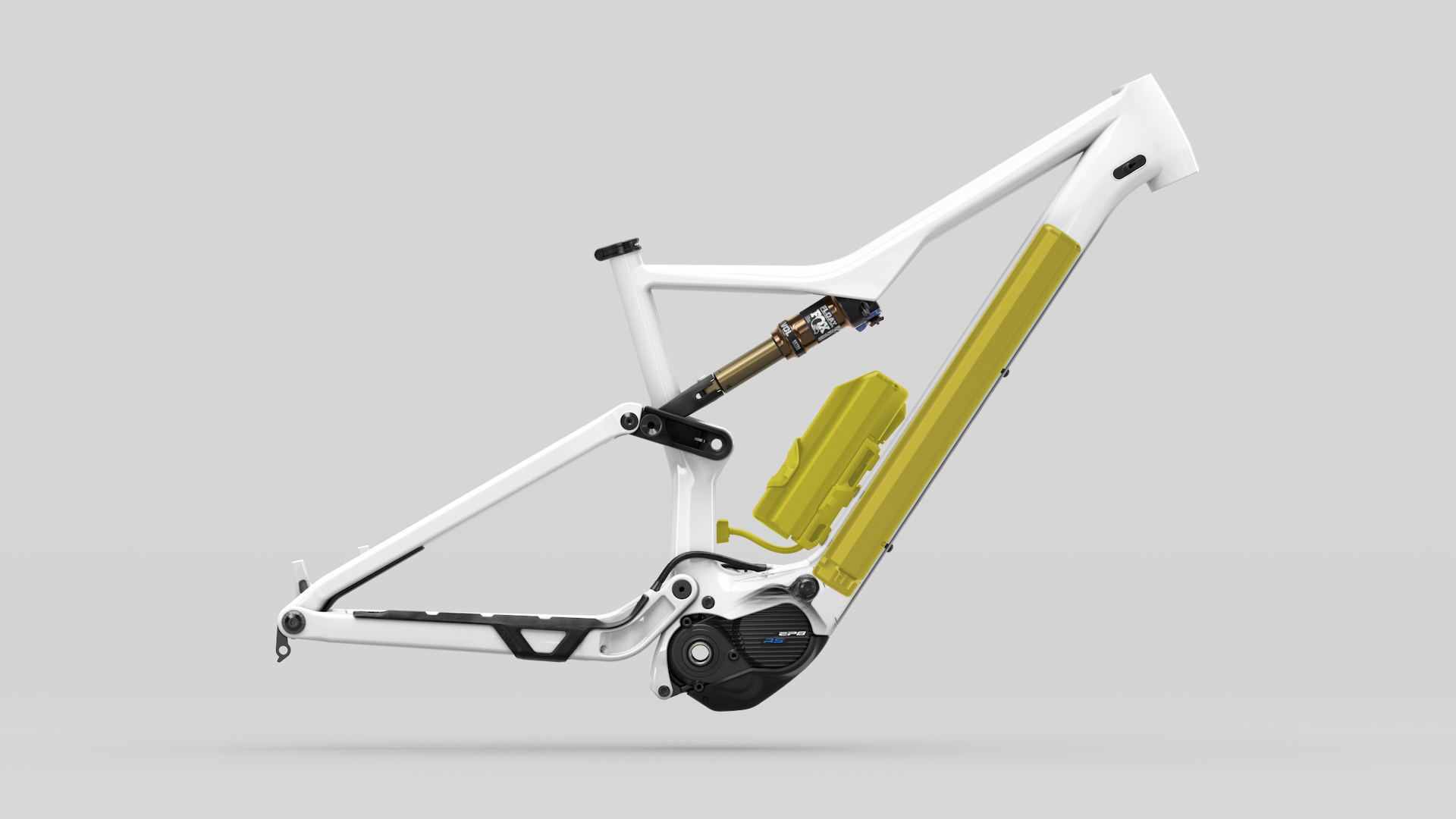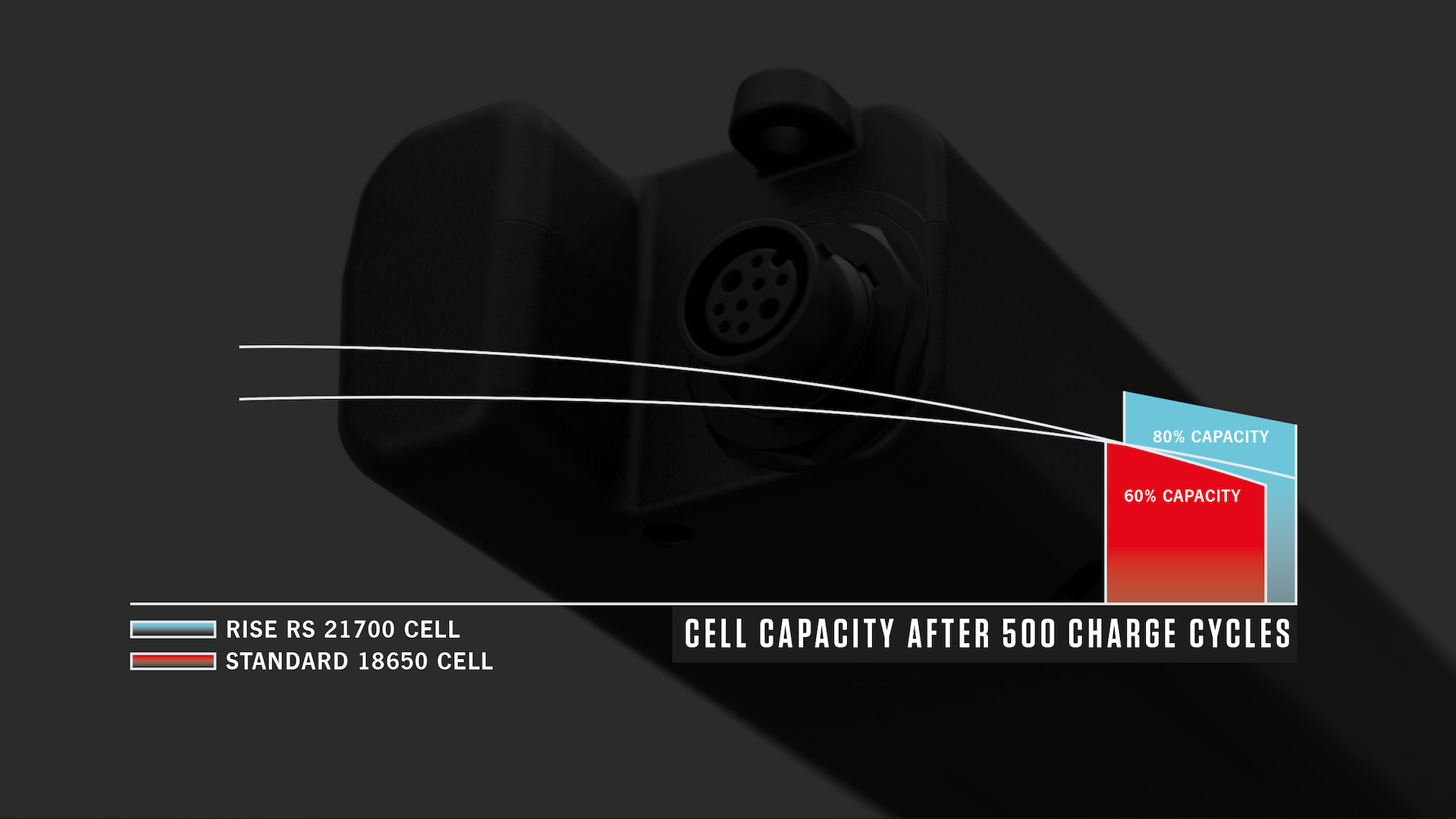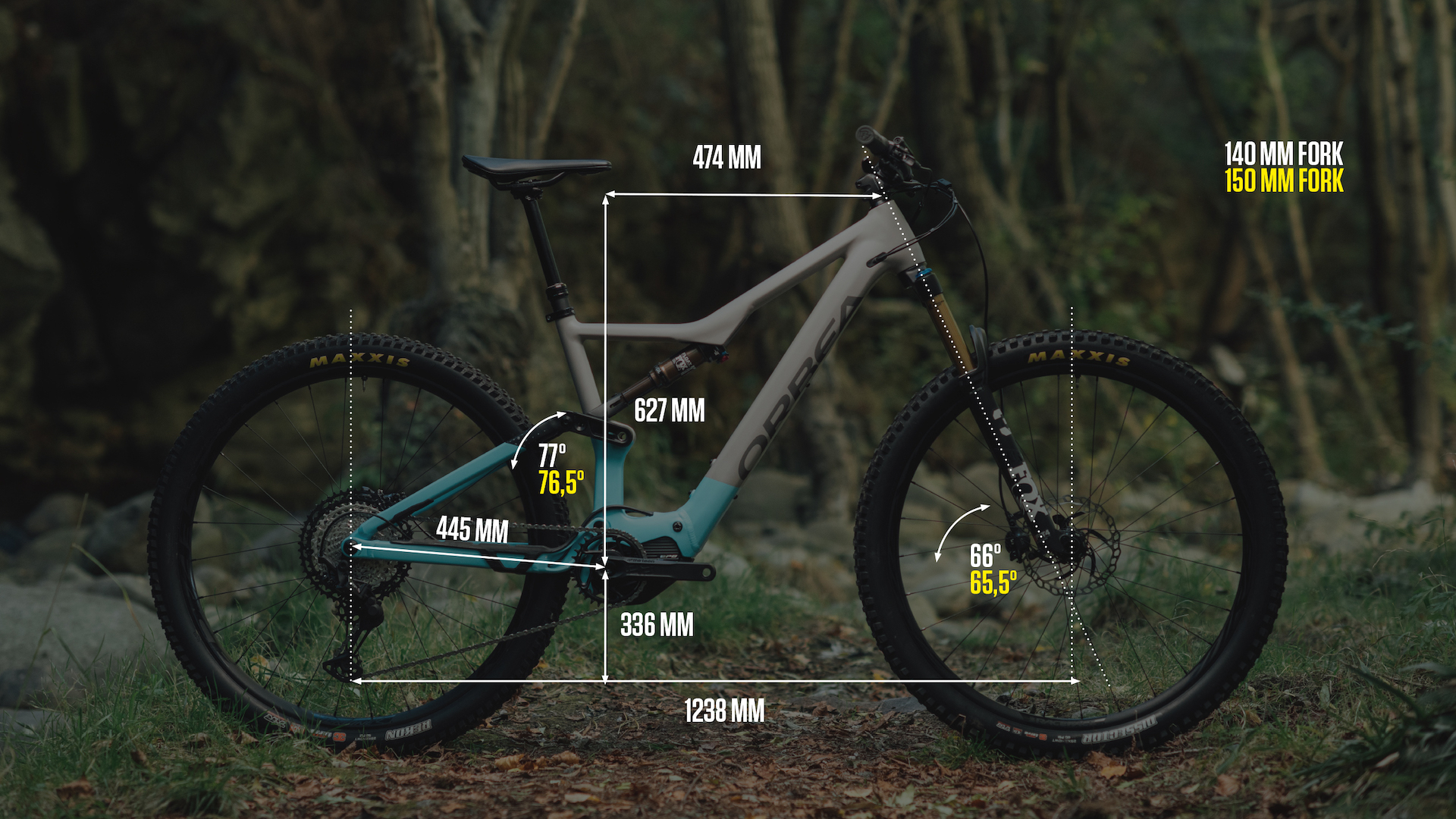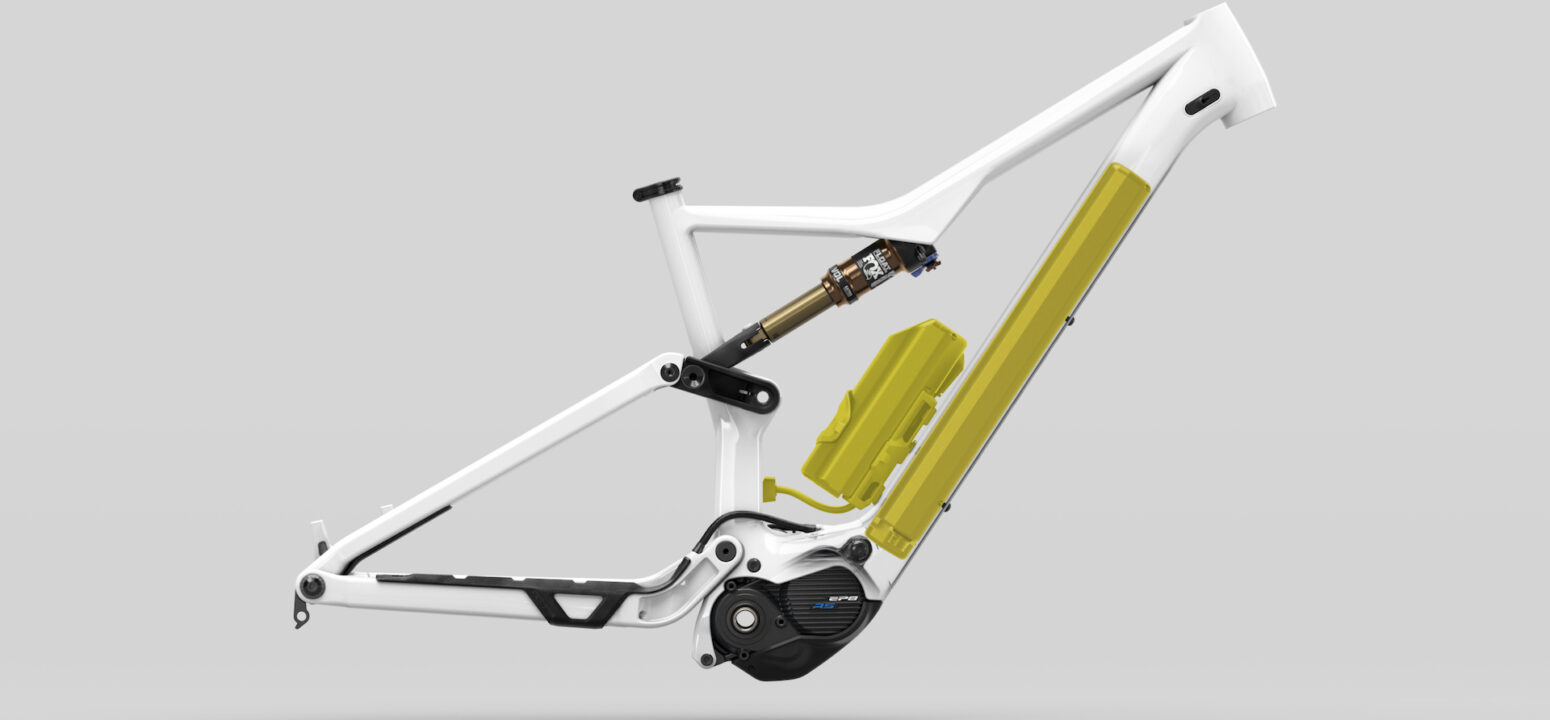It’s no secret that I absolutely love the Orbea Rise Carbon that we tested in issue 139 of Singletrack. For me it’s the perfect combination of simplicity, weight and power. The Rise Carbon comes with a full carbon frame, big forks (Fox Factory Kashima 36), plenty of mid to high end drivetrain parts and crucially a low fat 360Wh battery to power a custom tuned Shimano EP8 motor (Downtuned to 65nm max output from the standard 85nm). The whole bike weighs in at around 19kg with pedals, making it one of the lightest eMTBs on the market today.
All that combined, for me, offers the perfect combination of handling and power and in the M10 model that came it at £6995.
But you aren’t here for news of the Carbon version (read issue 139 and 140 if you want to find out more there). Today Orbea are launching the much rumoured alloy version of the Rise, and there’s a lot more to it than just a cheaper price and metal frame.
Semi Skimmed?
I’m going to start with the big news that unlike the carbon Rise this alloy version comes with a bigger battery capacity. The carbon 365Wh batter is upgraded to a considerable 540Wh system, which means we can hardly call it a ‘low fat’ eMTB. But with most ‘Full Fat’ eMTBs coming in with 600Wh and upwards these days it kind of doesn’t fit in that category either. What to call it then? How about ‘Semi Skimmed’? Does it matter?
Whatever you want to call it, it’s a radical change from the carbon version. And to note, there are no plans currently to upgrade the carbon range to this new battery size – this is an alloy frame option only right now and Orbea have their reasons.
For starters they are claiming (We have yet to get hold of one) that even with the alloy frame and bigger battery the bike still weighs in at just 20kg – and that’s for the entry level spec model. The top of the line model H10 tips the scales at a claimed 19kg, which is pretty close to the M10 carbon model that we have tested. You can see how they have done that by paying close attention to the model specs below (Clue: Check the fork choices).
Here’s what Orbea had to say about the extra battery capacity of the alloy models…

The Rise carbon version maintains its 360Wh battery, enough for rides of 3–4 hours, depending on how the battery is managed. This battery will continue to the be preferred favorite for riders looking for the lightest Rise experience. For longer rides and bigger outputs, Orbea offers a Range Extender that increases the total system capacity to 612Wh.
Orbea considered the needs of riders looking for the experience and autonomy of a carbon Rise but at a more accessible price, so they equipped the aluminum versions with a new 540Wh battery, making Rise Aluminum more appealing for a wide spectrum of riders, reducing the price and increasing the simplicity of the system for those looking for a light ebike without the need for a Range Extender. The new 540Wh battery has a record weight of just 2.7kg.
In Eco mode, the stated range for the battery on aluminum models has a range of more than 3,500m of elevation change; 2,200m in Trail mode; and 1,600m in Boost mode. As if that wasn’t enough, Rise Aluminum can be paired with a new 252Wh Range Extender, which results in a “light ebike” of almost 800Wh.
Orbea Press Release
Battery and Motor
For those of you not familiar with the Orbea Rise it’s well worth explaining that the Shimano EP8 motor on these models has been customised and tuned by Orbea and Shimano to produce what Orbea are designating the EP8 RS motor system. Essentially the motor is optimised for a higher pedalling cadence and the maximum power output has been tuned DOWN from the standard EP8 85nm to 65nm of torque. The reason is to balance the combination of lower battery capacity and lower bike weight to provide a bike that handles much more akin to a non-powered eMTB. Rather than getting a massive turbo boost in power the bike provides a much more nuanced and controlled power delivery that leaves you feeling in control through your pedalling. This ‘low fat’ power approach is not to everyone’s taste of course but for those looking for a more natural feeling ride rather than the feeling of being boosted by a big powerful motor, it certainly works. Other brands are doing similar things of course, in particular Specialized with their Levo SL range.
The battery system in the Rise H range has had some attention paid to it and Orbea are claiming their new battery is more compact and longer lasting. Instead of using a more typical battery comprising of 18650 actual cells, the Rise H battery is made up of 21700 cells and as such there is a claimed improvement in battery capacity over time. All batteries perform worse in terms of charge capacity over their lifetime. You can see what Orbea are claiming in the image below.

Spec Geometry
All is revealed below but don’t forget to take in to account the effect of the various fork lengths on the geometry depending on what spec level you go for.

Like the carbon Rise there are three alloy models, the H30 at the entry point, H15 and H10. Oh, and BTW? The ‘H’ stands fro ‘Hydro’, presumably because the aluminium tubing is hydro-formed to make it look nice and smooth and at a cursory glance at least, very similar in form to the carbon versions.

Pricing
The entry level H30 model with standard spec comes in at £4599 with the M15 at £5199 and the top spec alloy H10 model at £6099. For comparison we have the carbon prices below.
- Carbon Rise M-LTD £8999
- Carbon Rise M-Team £8299
- Carbon Rise M-10 £7099
- Carbon Rise M-20 £5599
An interesting story is to be told in the component choices in the table above. Note that in order to achieve the impressive, almost carbon like weight of a mere 19kg in the Rise H10 model it comes specced with a slimmer Fox Factory 34 fork. There’s a beefier Fox 36 Performance level fork on the mid range H15 model. Not that there’s anything at all wrong with the Fox 34 but it means your actual style of riding may need to be brought into the choice equation no matter what your budget. It’s this fork variation that leads to the differences in the head and seat angles in the table below.
That said, there’s always the option to change the component choices around at the point of purchase (see below).
| SIZE | Small | Medium | Large | X-Large |
| Seat Tube | 381 | 419 | 457 | 508 |
| Top Tube | 565 | 592 | 619 | 649 |
| Head Tube | 95 | 105 | 120 | 140 |
| Chainstay | 445 | 445 | 445 | 445 |
| BB height | 336 | 336 | 336 | 336 |
| BB Drop | 35/32 | 35/32 | 35/32 | 35/32 |
| Wheelbase | 1180 | 1205 | 1229 | 1255 |
| Head Angle | 66/65.5 | 66/65.5 | 66/65.5 | 66/65.5 |
| Seat Angle | 77/76.5 | 77/76.5 | 77/76.5 | 77/76.5 |
| Standover | 710 | 736 | 766 | 776 |
| Reach | 425 | 450 | 474 | 500 |
| Stack | 604 | 613 | 627 | 646 |
| Fork Length | 547 | 547 | 547 | 547 |
Customisation
But don’t think you are tied in to those specifications. Orbea offer a customisation facility that will allow you to tailor your chosen bike to your personal preferences. Don’t like the fork choice on your model? Swap them out on the Orbea website before you order and then have your bike delivered to your local dealer. Here’s the details from the Orbea Press release..
While Rise Carbon sees full personalization through MyO, the aluminum models feature three different color options and numerous components to choose from:
A Fox 34 or Fox 36 fork is available on all models; a Shimano display with more information or the elegant and discreet Junction EW-EN100; and different options for wheels, brakes or tires to fit the needs and preferences of each rider.
The new aluminium Rise models will be available starting in December.
Rise & Rider Connect
Through Rider Connect, users can reserve a Rise and manage their purchase at the dealer they selected, or personalize the bike thanks to MyO Lite and receive it at their nearest store – all at the click of a button.
Orbea Press release
How does Rider Connect work? Simply find your perfect bike in 5 steps:
- Go to this webpage
- Register
- Select a model
- Select your nearest store
- Request your bike model in the store of your choice or design the bike of your dreams and complete the purchase at orbea.com
Singletrack conclusion
As I said above, we have yet to get hold of a test model but hopefully that will happen pretty soon because unlike many other brands launches, somehow Orbea have managed to sort out their supply chains well enough to have these bikes ready to roll right now. Yup, according to Orbea they have stock ready to go.
Although I’ve not ridden one of these models yet, I have had lots of time riding the carbon M10 model. During the Zoom press release I did ask the question about how this alloy model will affect the sales of their carbon range since on the face of it you get many of the benefits of the carbon but wrapped up in a cheaper price and with more power. The answer I was give was that the carbon model will still be an attractive option for the specialist rider looking for the ultimate in lightweight riding. How much that turns out to be the case only time will tell. I expect orders for these are going to come thick and fast.
Want to read the complete Orbea Press Release?
Comments (11)
Leave Reply
Post Comment


Very weird mixup of statements from Orbea around the carbon model keeping the old battery etc.
And randomly sticking a skinnier fork on one model to ‘sort of’ bring the weight down.
I think you kind of need to think of the two versions – carbon and alloy – as different models completely. It makes a bit more sense in my head that way.
Quite like the look of this… been thinking ebike for my 60th (March 2023) so maybe need to order. I’m thinking I’d probably go the mid spec H15 with the 36. Only parts I’m not sure of are the wheels as previous experience (albeit a while ago) of the RF wheels was not great.
The downtube on this looks less bulky than a human-powered Santa Cruz. Niiiiice!
Having ridden a “ full fat “ for nearly 3 years mostly in Eco this looks like a better option if there was a dealer local to me ☹️ Mark according to Bike Radar the entry level bike comes with a pair of Bombers ?
That image listing the H30 as coming with the Fox 34 performance fork is a direct screen grab from the Orbea media pack. But elsewhere there is a spec sheet that lists it as coming with Bombers. Also, the image above shows Bombers.
I suspect Bombers are what you will get but I’ve asked for clarification and I’ll adjust the report depending on the response I get.
Rise M10 owner here. It’s a great bike.
The skinny fork to keep the weight down is done on the carbon one as well (but on the ‘Ltd’ and ‘team’ versions rather then the M10.
Equivalent spec H10/M10 (high end wheel set, factory shocks, XT throughout) is “only” £1000 difference but then you need to adjust for a 34 rather than a 36 but then offset the increased battery capacity. So take away the hype and its about £1k saving for alu frame vs carbon.
The change in battery capacity *is* interesting. I’ve had the battery out of mine and the ‘mount’ on the bike is the two bolts you can see on the underside of the downtube. IIRC those attach to two brackets that fit onto the battery itself so, unless the battery is actually longer and theres a restriction of some kind within the carbon tube (and there was nothing I remember – it was pretty snug but that was just getting it in around the cables and hoses) I can’t see why the new battery wouldn’t be mountable in the carbon frame.
On the other hand as a fit 80kg rider I’m getting up to 1500m or so vertical climb out of the 360 in the carbon which is more than enough for most rides. (profile 1, nearly all eco, a bit of trail and boost on super steep pitches). But more range, less battery anxiety is never a bad thing.
Not ready to go eMTB yet, but have been following the development of the ‘light” options out there with interest. The H15 model will be popular I suspect.
Interesting. If I was in the market I’d be looking at one of these.
But… what’s the rear travel? Can’t see it in the article?
I reckon I’ll be in the market for an ebike-lite in a couple of years, it’s starting to be too much effort needed to keep the fitness levels up to a level where a big multi day trip doesn’t result in major suffering – if life/work gets in the way and you don’t ride for a few months it’s all but gone and you have to start again. Hopefully there’ll be some more options other than the Rise (a bit too tame geo/travel-wise) and the Spesh SL models (How f****** much??!!?).
So, after my girlfriend so eloquently reminded me last night – “you’re not getting any younger” and “there’s no pockets in a shroud” I have brought my 60th pressie forward a year and ordered one of the H15 models. Suggested delivery is Feb but well see what happens. First complete bike I have purchased since 1991 (usually self build).